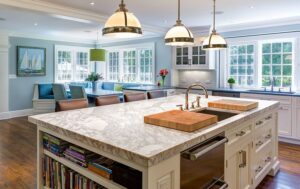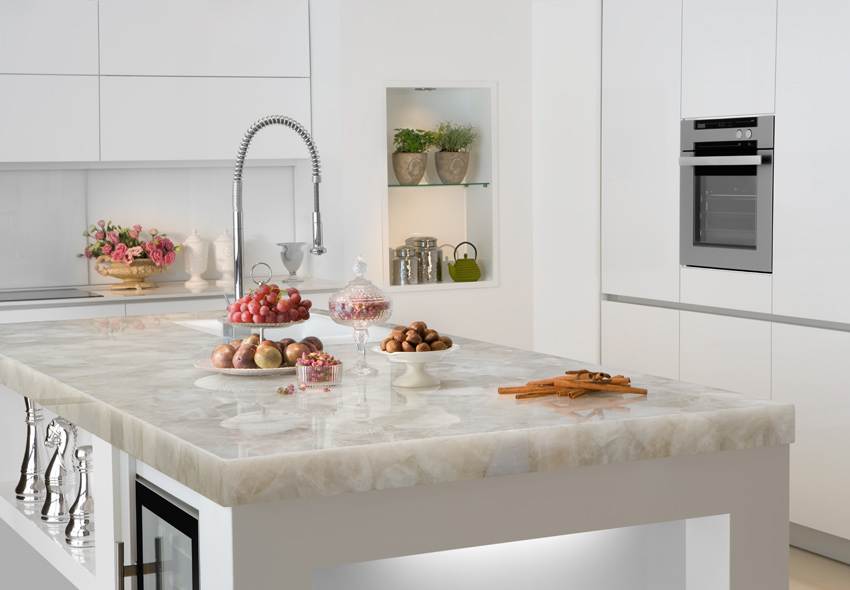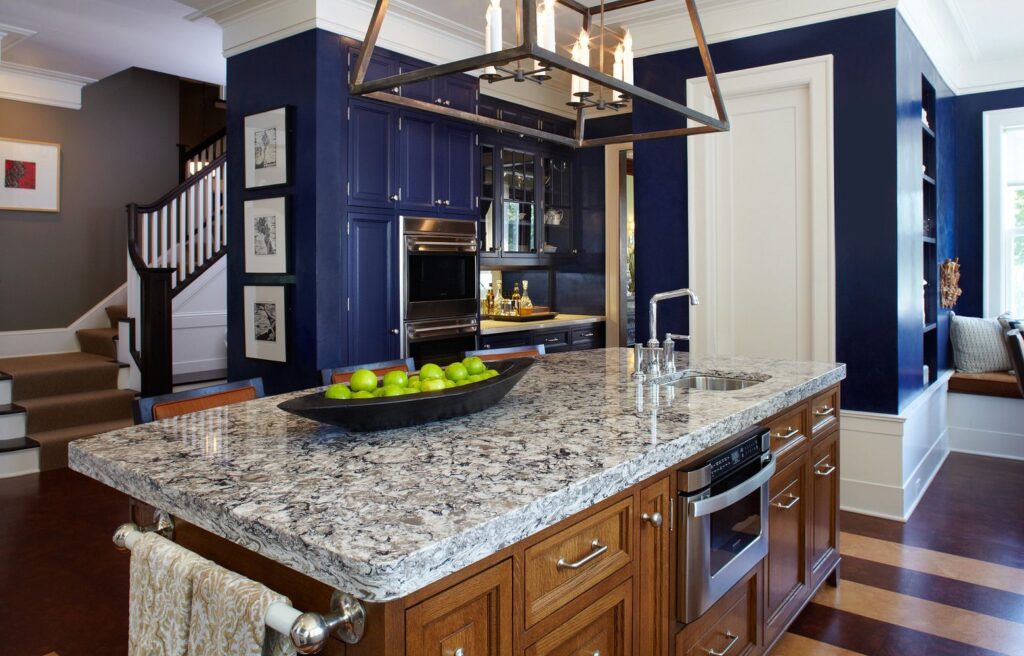1. Introduction
Countertops are the horizontal work surfaces found in kitchens, bathrooms, laundry rooms, and commercial spaces. They serve as the backbone of daily activities—everything from meal prep and baking to personal grooming and organizing happens on these surfaces. Beyond pure utility, countertops also play a critical role in the overall look and feel of a room, tying together cabinetry, backsplashes, and flooring for a cohesive design.
2. Most Popular Countertop Materials
Granite
A natural stone prized for its unique flecks and veining.
- Main feature: Extremely heat-resistant and scratch-resistant.
- Note: Because it’s porous, granite countertops require periodic sealing to prevent stains.
Quartz
An engineered surface made from crushed quartz bound with resin.
- Main feature: Non-porous and virtually maintenance-free.
- Note: Offers consistent color patterns and comes in a wide range of hues.
Marble
A classic choice known for its elegant veining and smooth feel.
- Main feature: Naturally cool surface, ideal for pastry work.
- Note: Prone to etching and staining, so sealing and careful upkeep are essential.
Laminate
A budget-friendly option featuring a printed decorative layer under a protective finish.
- Main feature: Lightweight and easy to install.
- Note: Susceptible to heat and moisture damage; edges may peel over time.
Butcher Block
Made from glued strips of hardwood such as maple or oak.
- Main feature: Warm, natural look and can be sanded to remove scratches.
- Note: Requires regular oiling to maintain moisture resistance and prevent cracks.
Concrete
A modern, industrial-style surface that can be tinted and cast in custom shapes.
- Main feature: Incredibly durable and heat-resistant.
- Note: May develop hairline cracks; sealing is necessary to protect against stains.
3. Basic Cost Overview
- Budget range: $20–$50 per square foot (laminate, basic butcher block).
- Mid-range: $50–$100 per square foot (standard granite, quartz).
- Premium: $100–$200+ per square foot (exotic granite, high-end marble, custom concrete).
Factors that affect cost include the material itself, slab thickness, edge profile complexity, installation labor, and any on-site modifications (cutouts for sinks or cooktops). Larger islands or unusual shapes will drive the total project price higher.
4. Style and Design Considerations
- Popular colors & finishes:
- Neutral tones (white, gray, black) for a timeless look
- Warm earth tones (beige, tan) to add coziness
- Polished vs. honed (matte) finishes to control shine and conceal scratches
- Modern design trends:
- Waterfall edges: Continuation of the countertop material down the sides of islands or peninsula ends for a seamless, sculptural effect.
- Integrated sinks: Countertop and sink cast in one piece—minimal seams, ultra-clean look.
- Bold veining: Use of high-contrast slabs (e.g., black marble with white veins) as a statement focal point.
5. Durability & Maintenance (Quick Guide)
- Low-maintenance materials: Quartz (non-porous), stainless steel, solid surface (e.g., Corian).
- Materials needing extra care: Marble and granite (require sealing every 6–12 months), concrete (resealing to prevent stains).
- General cleaning tips:
- Wipe daily with mild soap and water.
- Avoid abrasive sponges or harsh chemicals.
- Use cutting boards—never slice directly on the surface.
- Blot spills immediately, especially acidic liquids like lemon juice or wine.
6. Choosing the Right Countertop for Your Space
- Assess your lifestyle:
- Busy family kitchens benefit from low-maintenance quartz.
- Home chefs may prefer the natural heat resistance of granite or marble.
- Balance budget and style:
- If cost is a concern, laminate or butcher block can mimic premium looks on a budget.
- For long-term value, investing in quartz or granite often pays off in resale.
- Match your design aesthetic:
- Modern homes shine with concrete or sleek waterfall quartz.
- Traditional spaces feel warm with butcher block or classic marble.
Quick advice:
- “Quartz is great for busy kitchens.”
- “Marble looks elegant but stains easily.”
- “Butcher block adds warmth but needs regular oiling.”
7. Conclusion
Choosing the perfect countertop involves weighing material pros and cons, cost considerations, and design preferences. The right surface not only enhances daily functionality but also elevates your space’s visual appeal. Explore sample slabs in person, request professional measurements, and consult with a countertop specialist to ensure a flawless installation that stands the test of time.


